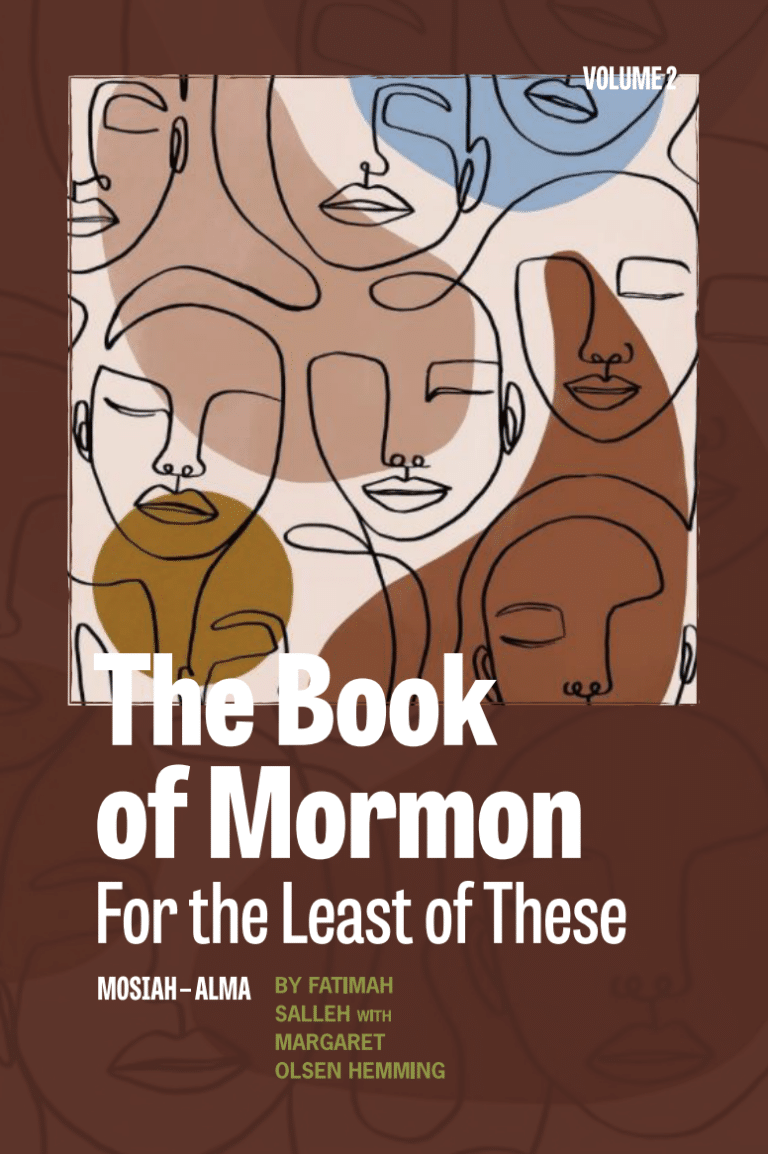Book review of The Book of Mormon For the Least of These, Vol. 2 by Fatimah Salleh and Margaret Olsen Hemming
I have taught the 10-11-year-old class in Primary for six years. While teaching this age group isn’t without its challenges, I do like that I can focus on teaching them to be kind, helpful, grateful kids who look for ways to live like Jesus. In a recent lesson, I spread pictures out on the classroom floor and encouraged the kids to find ones of stories that helped them “remember the works of the Lord.” Some of the pictures were of Book of Mormon paintings by Arnold Friberg. One of the kids picked up the picture of Ammon preparing to cut off the arms of the Lamanite thieves and said, “Whoa… look how buff he is!” Another immediately showed the Friberg picture of Nephi rebuking his brothers and said, “Well, Nephi is pretty buff too!” Needless to say, I lost the kids for a few minutes while they combed through the pictures looking for more Friberg buff-ness, successfully finding a brawny Abinadi, stripling warriors with six-packs, and even a young, jacked-up Jacob on the boat to the promised land, with biceps like a bodybuilder.
This discussion reminded me of Margaret Olsen Hemming’s keynote address delivered at the Midwest Pilgrims retreat this past April. She talked about the search for heroes in the Book of Mormon. For Nephi, Ammon, the stripling warriors, etc., we focus on their physical strength, the power of the Lord coursing through them, their ability to cast away doubt/fear/evil from their presence. What we do not often look closely at are the choices they make or the experiences they have that bring them to that moment of strength. Like the first, this second volume of The Book of Mormon: For the Least of These examines these stories through the lens of social justice and liberation theology. The authors, Dr. Fatimah Salleh and Margaret Olsen Hemming, ask us to study these characters, their motivations, and their choices. With Ammon, my primary kids immediately mention that “he’s awesome because he cut off the bad guys’ arms!” What we should focus on is that he leaves his home and life of privilege to go serve a people hostile to him, realizing that it might be for a long time, perhaps even a permanent situation. Salleh and Olsen Hemming state, “To enter a hostile space and simply say, “I’m here to be in relationship with you and serve you in any way I can,” is a radical act of love. It is these actions of service and love, not the later impressive display of weaponry, that lay the foundation for a healthy and peaceful exchange between the two men” (200-201).
The stripling warriors story is about strong, faithful young men who willingly fight when their parents and grandparents have taken an oath not to. Where does this strength and conviction come from? These young men grew up in Jershon, a unique community in the Book of Mormon. The authors point out that because of the amount of death the Anti-Nephi-Lehies suffered, their society likely had a number of single mothers. “After many of them endured widowhood, war, and immigration to a new land, the mothers of these young men built a community with sons deeply committed to protecting them” (340). Their faith is anchored in the conviction of their mothers and it is from them that they received their strength.
There are so many gems throughout Book of Mormon: For the Least of These. Salleh and Olsen Hemming give us the framework to dig deeper than the traditional telling of these stories. These are not the Book of Mormon stories my teachers told to me. Through their commentary, we see that the hero is not as vital as the healer, that creating a community is more worthwhile than conquering one, and that the Book of Mormon can offer much more for us to ponder during these turbulent times. When the Come Follow Me curriculum wends its way back to the Book of Mormon, I fully intend to still be teaching the 10-11-year-old class, using both Volumes 1 and 2 as companion guides to help my students reframe these stories and build a stronger, more inclusive community of faith. ⋑
Kirsten Campbell lives in the South Bend, Indiana, area and loves all things fabric. When she isn’t quilting or making clothes, she enjoys doing volunteer work in her community.




